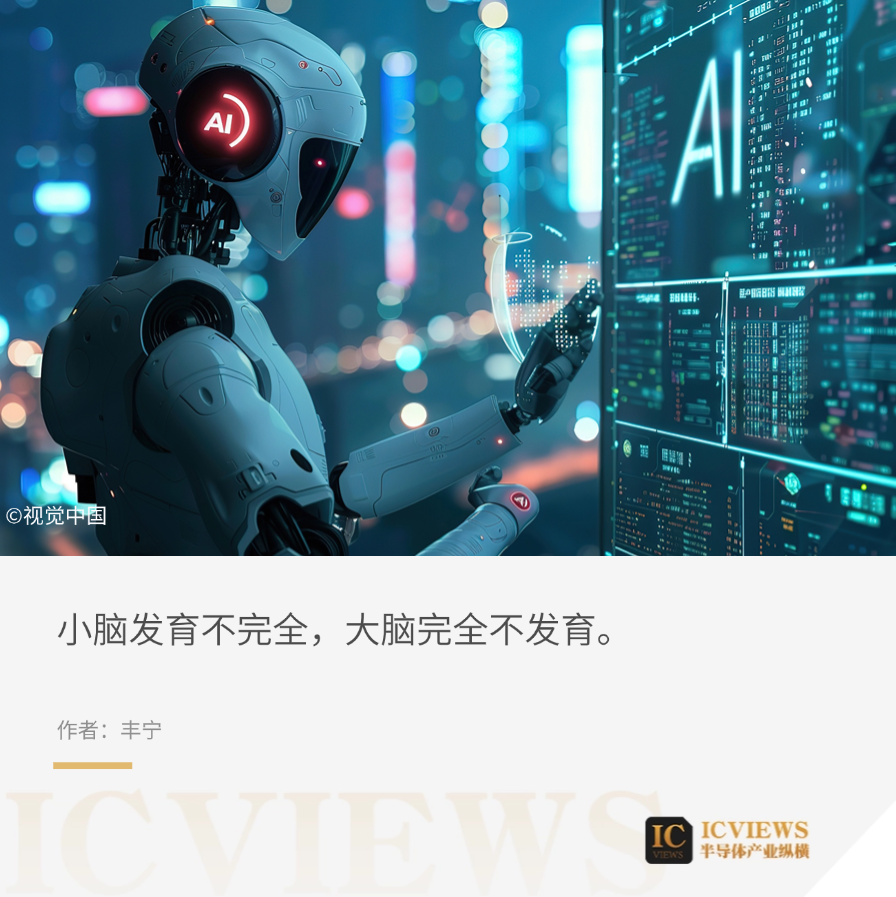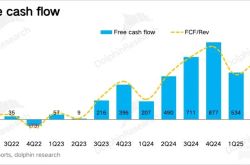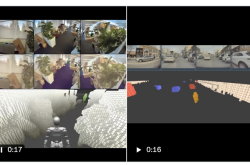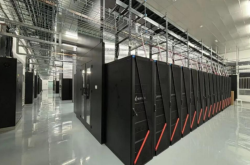Humanoid Robots: The Crucial Focus on Advancing the Brain
![]() 05/09 2025
05/09 2025
![]() 650
650

In recent years, humanoid robots have garnered substantial attention, primarily due to the burgeoning potential of this field. Huang Renxun has repeatedly emphasized that robots are on the cusp of their "ChatGPT moment," while NVIDIA views robots as the next frontier beyond generative AI. Conferences like ROSCon for robot developers are gaining momentum, and Unitree Robotics' robots performing yangko dances on the Spring Festival Gala, Tesla's Optimus robot folding clothes, and other such instances have captured widespread interest. These developments suggest that robots are advancing at an unprecedented pace. However, a humanoid robot marathon in early April served as a sobering reminder of the current state of the technology.
01 Humanoid Robots Fall Short of Market Expectations
Recently, the Beijing Yizhuang Half Marathon and Humanoid Robot Half Marathon commenced at the south gate of Nanhaizi Park. This was the world's inaugural humanoid robot half marathon, with 20 teams of humanoid robots and running enthusiasts competing together over a 21.0975-kilometer course. However, multiple online videos showed that the highly anticipated Unitree Robotics G1 humanoid robot fell during the race and then struggled to regain its footing.
Unitree Robotics issued a statement clarifying that they had not participated in any races recently and were primarily focused on preparing for live streaming of humanoid robot fights. The G1 humanoid robot has been sold to numerous customers worldwide since its launch last year and has been in use for an extended period. Therefore, several independent teams utilized the robots in this marathon. For instance, customers participated in the race using their own algorithms, which explains the presence of multiple Unitree robots at the event. These independent teams, operating under varying conditions, experienced significant performance variations. Like other electronic products, robot performance is closely tied to user input, and Unitree hopes for collective efforts to propel the robot industry forward.
A Unitree Robotics representative further elaborated that the G1 robots present at the marathon had undergone independent modifications by customer teams in terms of algorithms and hardware. For example, the City to City Technology team enhanced the G1 with a road perception system and optimized its endurance. This performance reflects the technical acumen of the customer teams rather than any intrinsic product flaws. "Like other electronic products, robot performance heavily relies on user debugging and optimization, and we urge the public to offer more understanding and patience to the industry."
In what appears to be a response to the scrutiny, on April 24, Wang Xingxing, founder and CEO of Unitree Robotics, met with the Chief Executive of the Hong Kong Special Administrative Region. During this meeting, he presented the company's independently developed intelligent robot product matrix through dynamic demonstrations. The technical exchange showcased innovative products like quadruped robots and bionic robotic arms, which demonstrated advanced capabilities such as navigating complex terrain, grasping, and transporting objects.
Nevertheless, the current development of humanoid robots significantly lags behind public expectations.
02 Humanoid Robots: Underdeveloped Cerebellum, Nonexistent Brain
Humanoid robots embody one of the most promising forms of embodied intelligence, emphasizing the interaction and autonomous behavior of intelligent agents within their environment. Embodied intelligence encompasses a system with environmental perception, intelligent interaction, and planning actions, comprising three core modules: perception, interaction, and motion control. By interacting with the environment, perceiving surroundings, making autonomous decisions, and executing planned actions, humanoid robots achieve task-level interaction.
The task execution mode of humanoid robots mirrors that of autonomous vehicles, relying on the three modules of perception, decision-making, and motion control. Humanoid robots receive instructions through brain functions like speech recognition and environmental perception, enabling upper-level planning such as task decomposition. Subsequently, the cerebellum optimizes path planning and issues decision instructions, driving the servo system to move the body and complete tasks. During task execution, the broad understanding and multi-level reasoning capabilities of large models endow humanoid robots with the core of embodied intelligence, enabling them to comprehend generalized tasks more effectively.
However, public competitions reveal numerous issues with current humanoid robots: they struggle with autonomous navigation, indicating an inability to locate targets based on loaded maps; endurance is poor, necessitating battery or even personnel replacements after just a few kilometers, sometimes requiring alcohol spraying for cooling; balance is inadequate, often requiring staff to accompany them during competitions and provide support to prevent falls, with robots finding it difficult to stand up unaided after falling; heads can detach while feet continue moving forward, suggesting dispensability of the head; arm movements are smooth but become disoriented after falls; in actual motion, most humanoid robots walk rather than run, lacking the ability to lift both feet simultaneously...
Some netizens humorously remark that current humanoid robots have "an underdeveloped cerebellum and a completely undeveloped brain." To some extent, this underscores the significant distance humanoid robots must traverse before achieving true industrialization and commercialization.
03 Humanoid Robots Need a More Potent Brain
Embodied intelligence was recognized as a path to AGI (Artificial General Intelligence) over 70 years ago. However, due to the immaturity of various technologies at the time, progress was halting. It is evident that the current wave of embodied intelligence is fueled by the third AI wave.
The fundamental distinction between this wave of embodied intelligence and past discussions on robots lies in the level of intelligence. For instance, the concept of robots entering factories to work, heavily promoted by Musk in recent years, was realized decades ago. The principle involved programming robots to perform prescribed actions in a known environment. This represents not only a low level of intelligence but also passive intelligence, lacking the autonomy to act when needed.
In the era of neural networks, true embodied intelligence must be proactive, akin to how it is depicted in movies—acquiring world information through perception and converting it into a form processable by machines. For example, converting images into pixel values and text into word vectors. Based on this, the machine makes independent decisions and interacts with the world. This also implies a potential shift in the market positioning of robots from industrial scenarios to our daily lives, which is pivotal for the heated market of embodied intelligence.
As the "brain" of humanoid robots, chip performance directly determines their intelligence and capabilities. For instance, Unitree employs an industry-leading 8-core high-performance CPU and NVIDIA Jetson Orin high-computing power module in its hardware, surpassing similar robots technologically. Taking the G1 as an example, with this support, it can simulate tens of thousands of falls and stands through deep reinforcement learning (DRL) in a simulation environment, ultimately mastering high-difficulty actions like "automatically standing up after falling" and "single-foot jumping to avoid obstacles".
NVIDIA's high-performance GPU chips, with their exceptional graphics processing capabilities, enhance visual information recognition and complex task processing, achieving a qualitative leap. Additionally, numerous domestic technology enterprises have made pivotal breakthroughs, successfully transitioning chip technology from the experimental stage to commercial application.
UBTECH's first-generation Walker primarily used Intel i7 7500U (2.7Ghz) and Intel i5 6200U (2.3Ghz) chips, while the upgraded Walker X employed Intel i7-8665U (dual-core, 1.9GHz) + NVIDIA GT1030 graphics card with 384 cores.
Fourier Intelligence's GR-1 is also the first humanoid robot with end-to-end environmental perception capabilities, utilizing the I7 13700H as its central processor.
In 2024, Engine AI's Zhongqing Robotics introduced the PM01 humanoid robot, marking the entry of humanoid robots into a new era of heterogeneous computing through the first deep integration of the Intel N97 processor with the NVIDIA Jetson Orin module. This innovative combination achieves groundbreaking improvements in energy efficiency, real-time response, and scalability through collaborative CPU and GPU optimization.
Zhiyuan Robotics' Jetson AGX Orin 64GB boasts ultimate AI computing power with 275 TOPS of INT8 computing power, eight times that of the previous generation Jetson AGX Xavier, supporting the simultaneous operation of multiple complex AI models (like VLM visual language models and SLAM algorithms).
Recently, Black Sesame Technologies will equip the "Tianwen" robot with a wiser "brain" and "cerebellum" based on the new Huashan A2000 and Wudang C1236 chips. "The A2000 chip enables 'Tianwen' to possess human-like common sense and knowledge, thereby achieving human-level decision-making. The C1236 chip allows parallel processing of AI computing tasks and control tasks, ensuring reliable operation and precise maneuvering of 'Tianwen' in complex environments."
The A2000 is defined as a "high-computing power chip platform specifically designed for the next generation of AI models," available in Lite, Standard, and Pro versions, with performances comparable to 1, 2, and 4 industry flagship chips, respectively.
The "industry flagship chip" mentioned here refers to NVIDIA's OrinX. The A2000 Pro chip is on par with 4 OrinX chips, indicating it can compete with NVIDIA's upcoming flagship chip Thor, boasting a computing power of 1000 TOPS.
04 The Premiere of Embodied Intelligence Games
The humanoid robot marathon was merely the beginning. The race tested the long-term motion and running capabilities of humanoid robots, uncovering and addressing issues. However, to unlock more movement forms, more dimensions, and more comprehensive and complex testing are essential.
From April 24 to 26, 2025, the inaugural embodied intelligence robot games will be held in Huishan District, Wuxi City.
Over 100 enterprises from across the country will converge at the games, showcasing nearly 200 exhibits. Following the opening ceremony, the games will feature competitive events like speed running, cross-country running, football, basketball, dance, and fighting, with intelligence, motion planning, and body design serving as "test points." The application events will focus on tasks such as transportation, intelligent grasping, indoor rescue, and innovative scenarios, demonstrating the robots' comprehensive abilities to complete complex tasks like environmental recognition, grasping, and planning and design across multiple dimensions.
In the speed running event, Unitree Robotics will compete alongside the National and Local Jointly Built Embodied Intelligence Robot Innovation Center (Beijing), the National and Local Jointly Built Humanoid Robot Innovation Center (Shanghai), and robot enterprises from Shenzhen, Shanghai, Xi'an, Chongqing, and other regions.
It is understood that besides the intense speed running competition, Unitree Robotics will also participate in the dance performance segment, performing alongside robots from Dongguan Benmo Technology Co., Ltd., and Shenzhen UBTECH Robotics Co., Ltd.
Some analysts believe that Unitree Robotics' sudden announcement of participation in the first embodied intelligence robot games is linked to the performance of its products in the Beijing Robot Half Marathon held in late April. Although Unitree Robotics publicly stated that it did not participate in the race and that the robots were customer-purchased for display purposes, with no targeted debugging prior to the race, the results still exerted some public opinion pressure. Participating in these embodied intelligence robot games may signify Unitree Robotics' reaffirmation of its technical prowess and stands as one of the highlights of the games.








